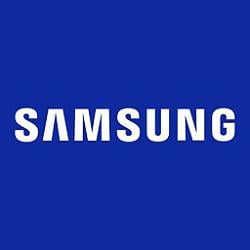New
#1
Very cool!
Moore's Law lives on.

Researchers at the Samsung Advanced Institute of Technology (SAIT) have unveiled the discovery of a new material, called amorphous boron nitride (a-BN), in collaboration with Ulsan National Institute of Science and Technology (UNIST) and the University of Cambridge. Published in the journal Nature, the study has the potential to accelerate the advent of the next generation of semiconductors.
2D Materials – The Key to Overcoming Scalability Challenges
Recently, SAIT has been working on the research and development of two-dimensional (2D) materials – crystalline materials with a single layer of atoms. Specifically, the institute has been working on the research and development of graphene, and has achieved groundbreaking research outcomes in this area such as the development of a new graphene transistor as well as a novel method of producing large-area, single-crystal wafer-scale graphene. In addition to researching and developing graphene, SAIT has been working to accelerate the material’s commercialization.
“To enhance the compatibility of graphene with silicon-based semiconductor processes, wafer-scale graphene growth on semiconductor substrates should be implemented at a temperature lower than 400°C.” said Hyeon-Jin Shin, a graphene project leader and Principal Researcher at SAIT. “We are also continuously working to expand the applications of graphene beyond semiconductors.”
2D Material Transformed – Amorphous Boron Nitride
The newly discovered material, called amorphous boron nitride (a-BN), consists of boron and nitrogen atoms with an amorphous molecule structure. While amorphous boron nitride is derived from white graphene, which includes boron and nitrogen atoms arranged in a hexagonal structure, the molecular structure of a-BN in fact makes it uniquely distinctive from white graphene.
Amorphous boron nitride has a best-in-class ultra-low dielectric constant of 1.78 with strong electrical and mechanical properties, and can be used as an interconnect isolation material to minimize electrical interference. It was also demonstrated that the material can be grown on a wafer scale at a low temperature of just 400°C. Thus, amorphous boron nitride is expected to be widely applied to semiconductors such as DRAM and NAND solutions, and especially in next generation memory solutions for large-scale servers.
“Recently, interest in 2D materials and the new materials derived from them has been increasing. However, there are still many challenges in applying the materials to existing semiconductor processes.” said Seongjun Park, Vice President and Head of Inorganic Material Lab, SAIT. “We will continue to develop new materials to lead the semiconductor paradigm shift.”
Read more: Samsung Leads Semiconductor Paradigm Shift with New Material Discovery – Samsung Global Newsroom
Tweet
— Twitter API (@user) View on Twitter
There are references from at least 2013- in particular to it being an ultra-high band-gap semiconductor and use in photo-catalysis, with particular application in the deep ultra-violet.
No obvious reference to relative density or speed as a semiconductor though.
I'm with Dalchina on this. I don't see anything amazing. There are no claims of higher speed or lower power consumption.
Indeed, the provided information is very sparse.
Maybe there's more, and maybe this will be super-wonderful someday. But until I see product ... this is just a work in progress.